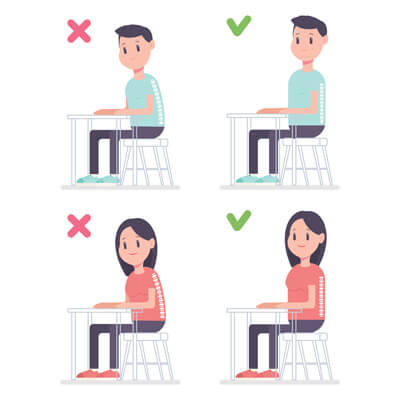 You’ve probably heard it before: “I just bent down to pick up a pen, and my back went out.” Sound familiar? The truth is, that pen didn’t throw your back out—weeks or months of accumulated stress on your lumbar spine did. That simple bending motion was just the final straw.
You’ve probably heard it before: “I just bent down to pick up a pen, and my back went out.” Sound familiar? The truth is, that pen didn’t throw your back out—weeks or months of accumulated stress on your lumbar spine did. That simple bending motion was just the final straw.
Lower back pain is one of those conditions that creeps up on us. One day we’re fine, and the next, we can barely get out of bed. But here’s the good news: understanding what’s causing your discomfort is the first step toward lasting relief.
The Sitting Epidemic
Let’s talk about your chair. Whether you’re working from home, commuting, or binge-watching your favorite show, sitting has become our default position. The problem? Your spine wasn’t designed for eight-plus hours of sitting each day.
When you sit for extended periods, the natural curve in your lower back flattens, forcing your lumbar discs to bear uneven pressure. Over time, this pressure accumulates, weakening the supportive structures around your spine. The muscles that should be protecting your back become deconditioned and unable to do their job effectively.
What you can do: Set a timer to stand and move every 30-45 minutes. Even a brief walk around your office or home can help reset your posture and give your spine a break.
The “Twist and Lift” Danger Zone
We’ve all been there—reaching into the backseat of the car, lifting a laundry basket while turning, or picking up a toddler while pivoting. These combined movements are particularly hard on your lower back because they force your spine to handle both rotational and compressive forces simultaneously.
Your spine can handle lifting. It can handle twisting. But asking it to do both at the same time, especially when you’re not properly warmed up, is a recipe for strain or injury.
What you can do: Face the object you’re lifting directly. Move your feet to turn your body rather than twisting at the waist. Keep the load close to your body. These simple mechanical adjustments can dramatically reduce your injury risk.

The Desk Setup Disaster
Your workstation setup might be contributing more to your back pain than you realize. A monitor that’s too low forces you to look down all day. A chair without proper lumbar support lets your lower back slump. A desk that’s the wrong height makes you hunch forward or reach awkwardly for your keyboard.
All these small postural problems add up. Day after day, hour after hour, your spine is being pulled out of its natural alignment. Eventually, the muscles and ligaments supporting your spine become fatigued, inflamed, and painful.
What you can do: Invest in an ergonomic assessment or simply check your setup. Your monitor should be at eye level, your feet flat on the floor, and your chair should support the natural curve of your lower back. Learn more about posture correction services to get personalized guidance.
Ignoring the Early Warning Signs
Perhaps the most damaging habit of all is dismissing early warning signs. That slight stiffness when you wake up? The occasional twinge when you bend over? The tightness in one side of your back after sitting? These aren’t just minor annoyances—they’re your body’s way of telling you something needs attention.
Many people wait until the pain becomes unbearable before seeking help. By that point, the condition has often progressed significantly, and recovery takes longer.
What you can do: Listen to your body. If you’re experiencing any symptoms of lower back pain, don’t wait for it to become debilitating. Early intervention through chiropractic care can often prevent a minor issue from becoming a major problem.
Breaking the Cycle
The good news is that most lower back pain is treatable and, more importantly, preventable. Through proper spinal alignment, targeted adjustments, and strategic lifestyle modifications, you can break the cycle of recurring back pain.
At our practice, we’ve spent over 20 years helping patients identify the root causes of their lower back discomfort and develop comprehensive treatment plans that address both immediate pain relief and long-term prevention. From adjustments that reduce inflammation and restore proper spinal mechanics to rehabilitative exercises that rebuild strength and stability, we take a whole-body approach to your recovery.
Your Next Steps
If you’re tired of managing lower back pain with temporary solutions, it’s time to address the underlying causes. Schedule a consultation to discuss your specific situation and learn how chiropractic care can help you reclaim a pain-free life.
Remember, that pen didn’t throw your back out—but the accumulated stress from these daily habits did. Let’s work together to break those patterns and build better ones.
